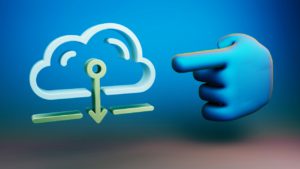Data security is a priority for businesses and individuals due to the saturation of malware and other malicious online activities. Data volume is growing unprecedentedly and is considered a virtual company’s most valued asset.
It’s getting more challenging for CRM users to manage data files manually. The total cost of archiving and storing this data also increases as a consequence. This can significantly reduce the quality of CRM software when there is a shortage of space. However, opting for high-quality data storage management software can be a quick solution to such a problem.
In this regard, the tools it offers and the cost optimization are key considerations. ShareArchiver excels in this league with its long-term data retention at multiple storage endpoints at an affordable price. The Full-Text E-Discovery feature and improved security make it dependable for organizations and individuals.
Data integrity is maintained through effective data storage management software. A more comprehensive approach to the features you should look out for in such software is described in this article.
A Brief Rundown of Data Storage Management Software
Equipping its users with the resources necessary, data storage management software successfully allows for organizing and managing an expanding data volume. Through this, its users can attain a centralized platform and easily monitor and optimize their storage capacity and space.
The software allows data protection across cloud-based systems. Various types of storage systems can be monitored through it. These include direct-attached storage (DAS), network-attached storage (NAS), storage area networks (SAN), cloud storage, etc.
Modern IT infrastructure runs on automation and scalability systems to maximize productivity. Data storage management software employs these two technologies to handle the complexities of whole storage. ShareArchiver utilizes the latest AI-powered tools and offers Data Archiving Software to aid business success with a rapid data backup facility.
Must-Have Data Storage Management Software Features
Businesses can reap numerous benefits by implementing potent data storage management software. But certain features that you should consider before investing in such software are explained below.
Data Protection, Compliance, and Security
Organizations dealing with virtual businesses have sensitive customer data and business files. To prevent cyberattacks from losing, corrupting, or manipulating all of their data, strong security measures are crucial.
- AES 256 Encryption, SSL access controls, and connections through such software allow for carefully managing and accessing records.
- Data security tools like role-based accessibility permissions eliminate unauthorized access, which should be present within such software.
Data Archiving and Compliance Software ensures that the files are stored in a format that complies with regulator standards and policies such as HIIPA and GDPR during audits. Audit logs and reports should be generated to monitor data access and verify that the system is in line with all applicable laws and guidelines. Intrusion detection systems should work as a safety net against malicious activities and restrict data access.
Data Deduplication and Compression
Another issue that many online users encounter when storing and archiving important data is storage capacity. Such software provides a feature called file compression that drastically reduces file size. This makes it take up less space, which aids in storage management.
Alongside this, during data archiving, duplicate files are created, which can be hard to track and remove. Data duplication is another function this software offers, guaranteeing that a single file stays in its original condition within the storage area.
Scalability
Software’s scalable system makes it easier to accommodate expanding data under the data needs of the growing company. Without compromising the system’s performance or data quality, scalability in software provides flexibility. It allows the system to keep and archive the data as per business requirements in real time. Vertical and horizontal scaling should both be supported through this. Most data management software provides elastic scalability for varying data and is available for dynamic workloads.
Data tiering and storage optimization
Automated software reads the data usage patterns within a system. Such software employs the data tiering technique across various systems. It easily classifies the data available into different tiers according to its usage frequency, date of creation, and value in the files. This paves the way for businesses to put hot data on high-performance storage tiers.
These can be flash or SSD, where they can be retrieved quickly. Data that is rarely utilized (cold data) may be archived on a less expensive medium, such as a hard disk drive (HDD) or cloud storage. It enables the users to spot files according to their preferred allocation, as they will automatically be shifted to the appropriate storage area.
Data Migration
For both data mobility and disaster recovery, data migration and replication are important. The ideal data storage management software would make it easy to transfer files to and from the cloud or other data storage services with minimal interruptions. It should allow for the replication of data copies on the backend so that backup and disaster recovery may be handled.
Data analytics and monitoring
Performance metrics can be calibrated and monitored using the data analyses tool within data storage management software. Insights and data patterns can be gauged through this feature. It helps create and manage the archiving strategies to determine the total data volume that can be archived.
Every corporation is different in its functions. By utilizing the software’s analytics dashboard, its administrators can determine the data archiving plan that is best suited. Customized reports and performance alerts are also features that enhance the overall productivity of the company. Cybersecurity enhancement and interactive data visualization are also provided through software analytics.
User-friendly Interface
For some startups and SMEs with minimal technical knowledge, data management software can be hard to handle. A user-friendly interface makes it easier to use and understand with better data visualization. An intuitive UI helps configure and read data patterns that are otherwise complex. Customized dashboards should be created for maximum usability and better data and file tracking. The software should be easy to navigate and mostly perform automated tasks, which makes it highly convenient.
Rapid data recovery
Regular backups and reliable recovery mechanisms are the features that should be at the forefront of the software’s capabilities. Multiple backup locations should be accessible on the software at all times, whether it is cloud-archived or on-premises. It assists in disaster management and data loss.
Several options for backup frequencies, which can be scheduled, continuous, or incremental, are features that you should consider. It can be a wise investment to have data backups alongside the regular functioning of the operating system. Effective data lifecycle management, from the file’s creation to its removal from storage, should be under the handling of data storage management software.
Compatibility with the Existing System
Different systems have diverse protocols, like NFS, iSCSI, and SMB. The software should have no problem integrating the pre-existing standards of the system. Supporting several data formats and operating systems should be an in-built feature of such software.
Moreover, it should mesh well with other IT management tools. Cloud management consoles and backup software are typically used in such systems. Data management software should have the ability to integrate with these for optimum functionality seamlessly.
Cost-effectiveness
When a user opts for several individual systems for every operation, like initial storage costs, licensing costs, maintenance costs, and scalability costs, its total expense reaches a new high. Data archiving software adopts resource allocation based on utilization. They allocate storage mediums according to data needs. Therefore, only the actual cost of storing the data is paid for. An individual may save money on unnecessary data storage space. The software should have the ability to handle repetitive tasks and archive files on its own. It also reduces manual labor costs.
Data Forecasting
To manage storage growth and surpass potential data storage shortages, the software should provide data forecasting tools. Such tools can monitor previous data usage trends and predict foreseeable data storage demands. Capacity expansion can be observed in this regard, and planning can be done to add more storage capacity.
Latest Updates Support
Automatic updates as per the data storage trends should be built into the software. With expanding data, the software should support the newest file formats. The latest features and security patches should be updated accordingly to keep the integrity and security of the data intact. It should offer reliable customer support in case of any query, which helps the client utilize it regularly.
Best Practices in Implementing Data Storage Management Software
Careful planning and execution are required to employ a data storage management system. Here are some best practices that you can take into consideration while doing that.
Streamlined Data Archiving Objectives
- Conduct a comprehensive study of the company’s current data storage.
- Data growth projections and the company’s future goals should be kept in mind.
- Gain insights about the current storage capacity and future requirements to set an objective.
Choosing the Right Data Management Software
- Always look for data storage management software that has features that align with the company’s storage needs.
- Cost-effectiveness, automation systems, scalability, and security measures should be considered when choosing the right software. Share Archiver is an optimum choice as it fulfills all requirements. The software is equipped with archive storage solutions along with e-discovery tools. These show enterprise-grade encryption and fast file search without any hindrance, making it highly convenient.
Apply Data Management Strategies
Before completely integrating the software with your existing operating system, do a trial run. Ensure its compatibility and performance before letting it handle all data archiving and storage functions. Develop a detailed data migration plan that contains everything from classifying, organizing, and transferring data from the current system to the new software. Establish a priority list that starts with transferring backup-assisted critical data files.
Regular Evaluation
- The effectiveness of such software should be monitored and evaluated regularly.
- Run diagnostic tests and monitor data analytics to make necessary enhancements and rectify errors if required.
Adapting to Data and Market Demands
Establish software functions to allow it to stay up-to-date with regulatory policies and the latest trends in data storage and management. Adapt to the growing data volumes by changing strategies meticulously. It allows the user to suit best their business’s interests and goals for further growth.
Conclusion
The need to manage data is rising with the saturation of digital businesses and infrastructure. With exceptional volumes of consumer data and business files, firm owners face challenges in managing and organizing them to keep them safe. Adopting data storage management software can automatically take care of all data compression, migration, data recovery, and data archiving tasks for IT personnel.
Not only does it save on the costs of manual labor, but it also streamlines all functions according to business demands. It helps develop a secure and modern data storage and management system to enhance productivity. We hope this article was of maximum help to you.














